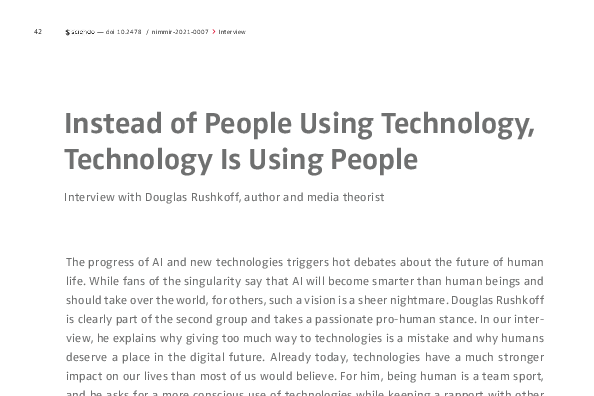Ghosts in the Dark: How to Prepare for Times of Hyper-Privacy
Felipe Thomaz
Even the dark web has its bright sides because it can be used as an unregulated testbed for technologies that will eventually appear on the surface. Also, it is a useful place to study consumer privacy and have a view of what the surface world might look like under an extreme level of consumer data protection. In such a world, even our best customers might look like never-before-seen individuals, until they decide to reveal themselves. If there is trust, and a worthwhile value exchange, consumers might be willing to share their data and not enact all of the hyper-privacy available to them. To seize the opportunities, companies should take stock of their customer relationships, hone their data needs, and learn what information is critical, advantageous, or irrelevant for their context. They should implement initiatives that drive choice carefully, in a trustful relationship.

![[Translate to English:] [Translate to English:]](/fileadmin/_processed_/9/0/csm_2021_1Licht_ins_Dunkel_4f1312736f.png)
![[Translate to English:] [Translate to English:]](/fileadmin/_processed_/e/e/csm_wertenbroch_vol_13_no_1_de_0_b4b4446d15.png)
![[Translate to English:] [Translate to English:]](/fileadmin/_processed_/e/6/csm_Algorithmen-basierte_Werbung_d9b3d65173.png)
![[Translate to English:] [Translate to English:]](/fileadmin/_processed_/3/7/csm_kuebler_pauwels_vol_13_no_1_de_0_683618de8a.png)

![[Translate to English:] [Translate to English:]](/fileadmin/_processed_/1/4/csm_Die_Illusion_der_Wahlfreiheit_f80894d2d0.png)
![[Translate to English:] [Translate to English:]](/fileadmin/_processed_/c/e/csm_Jung__aber_nicht_naiv_55c440f5cd.png)


